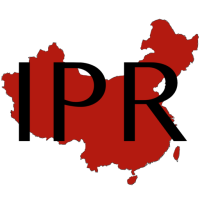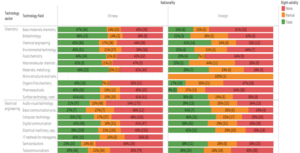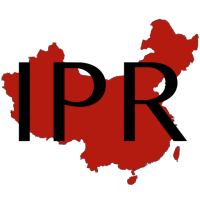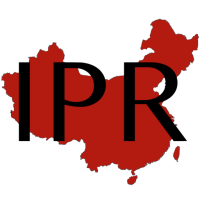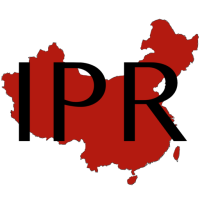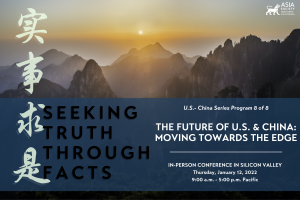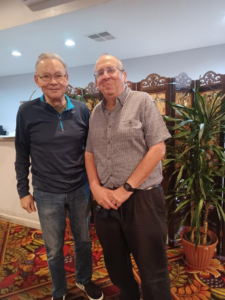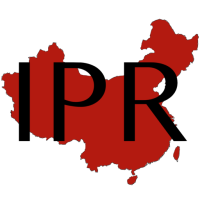
This is a sequel to my January 4, 2024 blog on developments in DS611, the WTO case that the EU filed against China regarding its antisuit injunction (ASI) practices for SEPs, as well as my December 18, 2023 blog on the Oppo v. Nokia case which discussed global rate setting for SEPs by a Chinese court, including its relationship with DS611.
Since those two blogs, several other notable Chinese developments regarding SEPs have occurred. These include the Chongqing trial court decision in Oppo v Nokia, the SPC decision in Oppo v ACT, and the SPC decision reversing an “essential facilities” antitrust determination of the Ningbo Intermediate court in Ningbo Ketian Magnetics Co., Ltd. v. Hitachi Metals, Ltd. (together the “Three Decisions”). The SPC decision has thus far yet to be published. The first of these two decisions has been issued outside of official channels. Information on the Hitachi Metals decision has thus far been limited to a corporate press release.
In addition to these cases, on January 17, 2024, the EU published two of its filings from DS611: its post-hearing brief in DS611 on January 15, 2024 (the “Post Hearing Brief”) and its November 20, 2023 responses to questions from the WTO Panel after the first substantive meeting. The responses to questions offer valuable additional insights into questions raised in the case. The EU filings are available on the EU’s website.
Still, another development has been that on January 24, 2024, Nokia announced a settlement of its global royalty dispute with Oppo just a few weeks after the worldwide rate-setting decision of the Chongqing court in Oppo v Nokia. As I discussed in my December 18, 2023 blog, the decision in Oppo v. Nokia was made shortly after the end of the WTO hearings and is not directly reflected in the public WTO filings. It is unclear how the WTO and the litigants in DS611 will address the new challenge of the Chinese global rate setting in the context of the DS611 ASI case. The EU’s concern that China will be interfering in the adjudication by EU courts of patents granted in their territory applies with at least equal force to global rate setting compared to ASIs.
The US is noticeably absent from the debate on rule-of-law issues
I surmise from the Post Hearing Brief that the United States is largely indifferent to the EU’s claims for greater transparency. For example, the Post Hearing Brief notes that the EU, Canada, and Australia all agree on the centrality of transparency (Para. 118). The position of the United States is not mentioned. Article 63 of the TRIPS Agreement authorizes members to ask other members about case decisions, but it does not explicitly require the member to respond. Concerning that long-standing question, the Brief similarly notes: “The European Union maintains that Members are under an obligation to respond to a request for information. Australia, Canada, Japan and Korea concur on this point.” (para. 30). Again, the United States is not mentioned. Despite the apparent lack of support for the EU position by the United States government, it is nonetheless gratifying to see other countries supporting calls for increased transparency. China’s emerging case law system is also backed up scholars, including a recent article authored by my former student, Dr. Riccardo Vecellio Segate, on the interface of that system with WTO requirements.
The EU also points out that the transparency obligation in the TRIPS Agreement is broader than the common law concepts of transparency (para. 123). I similarly interpret the obligations of the TRIPS Agreement (Art. 63) to make “final judicial decisions” of “general application” publicly available to be broader in scope than being limited to binding common law precedents. The EU also takes the position China’s ASI system is biased against patent holders: “The European Union argued that the five anti-suit injunctions systematically favored the interests of one party, the implementer, over the interests of the other party, the SEP owner” (para. 166). The positions taken by the EU are also generally consistent with my view that China’s ASIs are distinctly Chinese in origin, with a different structure and purpose than common law ASIs.
The EU makes a compelling case for requiring the official publication of “model,” “typical,” “leading,” or similarly recognized cases by China, pursuant to the TRIPS Agreement and WTO jurisprudence (paras. 125, 126). An added concern is that when cases are not published on the curated official judicial database, wenshuwang, but are only available on private databases, users may question the accuracy and completeness of the case text. The many references in this blog to unofficial sources of cases or corporate press releases are further evidence of the Chinese courts’ need for greater transparency and speed in publication.
Chinese ASIs, global rate settings, and settlements
The EU arguments concerning the impact of ASIs on settlements have become more relevant with the recent Oppo and Nokia settlement. The EU takes issue with the position advanced by the Chinese government that ASIs facilitate settlements: “A settlement reached with an implementer after an ASI has been imposed on the SEP owner cannot be deemed in line with a normal exploitation of its patents. The anti-suit injunction leads SEP owners to settle for below FRAND royalties and thus prevents them from extracting the economic value that could be expected from the patents” (para. 74). I agree. Parties may feel the need to settle for a variety of reasons. One of these reasons may be further reducing risks after adverse global decisions, such as the recent Chinese decision in Oppo v. Nokia. Low-rate decisions such as Oppo v. Nokia and Oppo v. ACT may inspire settlements to avoid having an adverse appellate precedent or a low-rate judicially determined comparable license, and/or to maintain confidentiality over royalty arrangements, among other reasons.
The many translations of FRAND in China
In my earlier blogs, I pointed out the Chinese courts’ continuing inconsistencies and mistranslations of FRAND. The Three Decisions offer little progress on correctly translating and applying FRAND. The Oppo v. ACT decision probably tried the hardest to make it appear as if its translation of FRAND was correct when it translated FRAND without the “and” while using the acronym throughout the case decision. It also noted that its translation is “the internationally adopted English term FRAND” (“公平、合理、无歧视 [以下沿袭国际普片·采用英文术语FRAND”]) (p. 4). Perhaps the Court is responding to my criticism of how the Chinese courts translate FRAND. The Court also follows the practice of prior “FRND” decisions of relying on general Chinese law and civil law concepts in adjudicating SEP cases, including fairness, reasonableness, honesty, and good faith negotiations to the exclusion of any referrals to the ITU for explanations of its meaning of FRAND (pp. 31-32). Consistent with this disaggregated approach, the lower court made separate “fair” and “reasonable” determinations without reference to an aggregated concept that includes “ND” (p. 13).
The lower court decision in Hitachi Metals also continued the practice of consistent inconsistency in translating FRAND. It imposed a “FRND” obligation on licensing non-standard essential patents. In one instance, it substituted “mutual benefit” (互利) for the ND leg of FRAND. In another example, it omitted the commas. In yet another instance, it only referred to “fair” and “reasonable.” Is the Court being sloppy? Is it referring to different civil law or concepts of FRAND, or is “consistency,” in the words of Emerson, simply the “hobgoblin” of a non-native speaker such as myself? If one reviews the landscape of FRAND translations, Taiwanese decisions, international organizations (WIPO, ITU), and Chinese standards-setting organizations, most have translated FRAND into Chinese with an “and.” Chinese punctuation practice and legislative policies also favor an “and.” In my view, the “internationally adopted English term FRAND” still necessitates unambiguous accuracy in translation with an explicit “and” which helps form FRAND as composite, internationally recognized term. It should also be applied consistently throughout a case decision.
On January 31, 2024, I will discuss other creative adoptions of the concept of FRAND by China’s antitrust agencies, including its relationship to SEP jurisprudence in China as part of an ABA Brown Bag luncheon series. Registration is free and open to all. I also expect to publish a more extended article on this topic in Intellectual Asset Management shortly.
- SEO Powered Content & PR Distribution. Get Amplified Today.
- PlatoData.Network Vertical Generative Ai. Empower Yourself. Access Here.
- PlatoAiStream. Web3 Intelligence. Knowledge Amplified. Access Here.
- PlatoESG. Carbon, CleanTech, Energy, Environment, Solar, Waste Management. Access Here.
- PlatoHealth. Biotech and Clinical Trials Intelligence. Access Here.
- Source: https://chinaipr.com/2024/01/25/chinese-three-dimensional-seps-recent-cases-the-wto-and-transparency/
- :has
- :is
- :not
- ][p
- 118
- 125
- 13
- 15%
- 17
- 20
- 2023
- 2024
- 22
- 24
- 30
- 31
- 49
- 7
- a
- About
- absent
- accuracy
- added
- addition
- Additional
- address
- adopted
- advanced
- adverse
- After
- again
- against
- agencies
- Agreement
- All
- also
- among
- an
- and
- Another
- antitrust
- any
- apparent
- appear
- applied
- applies
- Applying
- approach
- ARE
- argued
- arguments
- arrangements
- Art
- article
- AS
- ask
- asset
- asset management
- At
- Australia
- authored
- available
- avoid
- backed
- bag
- BE
- become
- been
- being
- below
- biased
- binding
- Blog
- blogs
- broader
- brown
- but
- by
- Calls
- cambridge
- Canada
- cannot
- case
- cases
- categories
- Category
- Centrality
- CFM
- challenge
- channels
- China
- Chinas
- chinese
- civil
- claims
- CO
- Common
- comparable
- compared
- compelling
- concept
- concepts
- Concern
- concerning
- confidentiality
- consistent
- consistently
- context
- continued
- continuing
- Corporate
- correct
- correctly
- could
- countries
- Court
- Courts
- Creative
- curated
- Database
- databases
- debate
- December
- decision
- decisions
- deemed
- Despite
- determination
- determined
- Development
- developments
- different
- directly
- discuss
- discussed
- Dispute
- distinctly
- does
- dr
- Earlier
- Economic
- economic value
- emerging
- end
- English
- equal
- essential
- EU
- Europa
- European
- european union
- evidence
- example
- expect
- expected
- explicitly
- exploitation
- extended
- facilitate
- fairness
- faith
- far
- favor
- feel
- few
- filed
- Files
- filings
- First
- five
- follows
- For
- Force
- form
- Former
- Free
- from
- further
- General
- generally
- Global
- good
- Government
- granted
- greater
- Have
- having
- hearing
- helps
- hitachi
- holders
- How
- HTTPS
- i
- if
- Impact
- imposed
- in
- include
- includes
- Including
- inconsistencies
- increased
- information
- insights
- inspire
- instance
- intellectual
- interests
- Interface
- interfering
- Intermediate
- International
- internationally
- into
- issue
- Issued
- IT
- ITS
- January
- January 24
- Japan
- judicial
- just
- korea
- Lack
- landscape
- largely
- Law
- Leads
- least
- Legislative
- License
- Licensing
- Limited
- Line
- little
- long-standing
- lower
- Ltd
- made
- maintain
- maintains
- make
- MAKES
- management
- many
- May..
- meaning
- meeting
- member
- Members
- mentioned
- Metals
- more
- most
- my
- myself
- Need
- negotiations
- New
- Nokia
- non-native
- normal
- notable
- noted
- Notes
- noticeably
- November
- obligation
- obligations
- occurred
- of
- offer
- official
- on
- ONE
- only
- open
- oppo
- or
- organizations
- Origin
- Other
- out
- outside
- over
- owner
- owners
- panel
- PARA
- part
- parties
- party
- patent
- Patents
- perhaps
- plato
- Plato Data Intelligence
- PlatoData
- Point
- points
- policies
- position
- positions
- Post
- practice
- practices
- Precedent
- press
- Press Releases
- prevents
- Prior
- private
- probably
- Progress
- public
- Publication
- publicly
- publish
- published
- purpose
- Pursuant
- question
- Questions
- raised
- Rate
- reached
- reasons
- recent
- recognized
- reducing
- reference
- references
- referrals
- referred
- reflected
- regarding
- relationship
- Releases
- relevant
- relying
- request
- require
- Requirements
- Respond
- responding
- responses
- Reviews
- risks
- royalties
- royalty
- scope
- see
- separate
- sequel
- Series
- setting
- settings
- settle
- settlement
- Settlements
- several
- Shortly
- should
- Similarly
- simply
- Sources
- Speaker
- speed
- States
- Still
- structure
- Student
- such
- support
- Supporting
- system
- TAG
- taken
- takes
- taxonomy
- term
- territory
- text
- than
- that
- The
- The Landscape
- their
- Them
- These
- this
- those
- three
- throughout
- Thus
- to
- together
- topic
- translate
- Translation
- Translations
- Transparency
- trial
- tried
- two
- unclear
- under
- union
- United
- United States
- us
- users
- using
- Valuable
- value
- variety
- View
- was
- Weeks
- WELL
- when
- which
- while
- will
- with
- without
- WordPress
- words
- worldwide
- yet
- zephyrnet
- zoom

